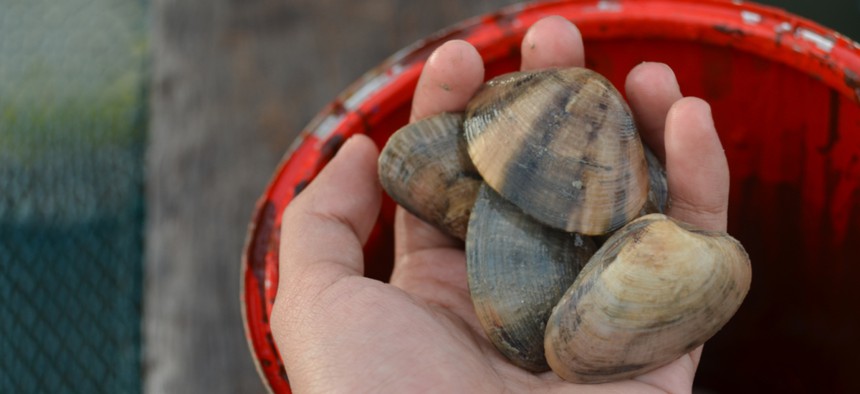Clams Are Fighting Florida’s Red Tide

The hope is that clams can help filter out the red tide. Shutterstock

Connecting state and local government leaders
Thousands of clams have been released into the Sarasota Bay.
Even clams have to work for the man. About 250,000 of them recently got jobs toiling on humans’ behalf.
On Nov. 18, a group called Sarasota Bay Watch in Sarasota, Florida released thousands of clams into local waters. Scientists are using these creatures to fight red tide, a toxic algae bloom in the Gulf of Mexico that has devastated local marine life and tourism, prompting governor Rick Scott to declare a state of emergency in seven counties in August.
About 3,600 pounds of clams were transported from nearby Pine Island to be released in the Gulf of Mexico in five cycles. Each of the quarter-million mollusks has the same job: To paraphrase the late Otis Redding, they’ll be sitting in the waters of the bay—sitting in the morning sun, and sitting when the evening comes.
But they won’t be wasting time. For the clams will also naturally filter red tide and make Sarasota Bay great again.
Red tide is a naturally-occurring algae bloom that produces a harsh neurotoxin called brevetoxin. This toxin paralyzes fish gills, leaving them unable to take in oxygen. All fish are vulnerable to red tide’s effects, especially smaller, slow-moving swimmers, as well as bottom-feeders. Depending upon the severity and duration of the bloom, even large marine life can suffer. The latest bout of red tide, which began a year ago and has continued unabated, leaves sharks, turtles, manatees, and dolphins in its wake. The toxin can also be harmful to humans, making respiration more difficult.
Though red tide isn’t caused by human activity, scientists posit that our endeavors have made it more severe in recent years. Warming waters in the Gulf of Mexico, nutrient-rich agricultural runoff, the effects of manufacturing, and building development are all possible contributors. As such, researchers are extremely wary of introducing artificial solutions that could harm the delicate balance of marine ecosystems, causing more damage.
That’s why scientists at Sarasota’s Mote Marine Laboratory have been experimenting with using filter feeders like clams to absorb brevetoxin in the waters. Bivalve species like oysters and clams can accumulate high concentrations of brevetoxin and filter it from their systems within weeks. While it can be harmful to eat the creatures that have absorbed this poison, the mollusks themselves have a high rate of survival despite ingesting brevetoxin. So, they make great natural filters.
Sarasota Bay Watch plans to place more crabs from out of town in local waters in 2019. Meanwhile, researchers at Mote Marine Laboratory say they’ll be studying the clams’ filtration systems to figure out how humans might someday get the same job done, cleaning up red tide on a larger scale by imitating the work of mollusks.
Ephrat Livni is a contributor at Quartz, which originally published this article.

NEXT STORY: Surging Interest in Black History Gives a Lift to Museums, Tourism




